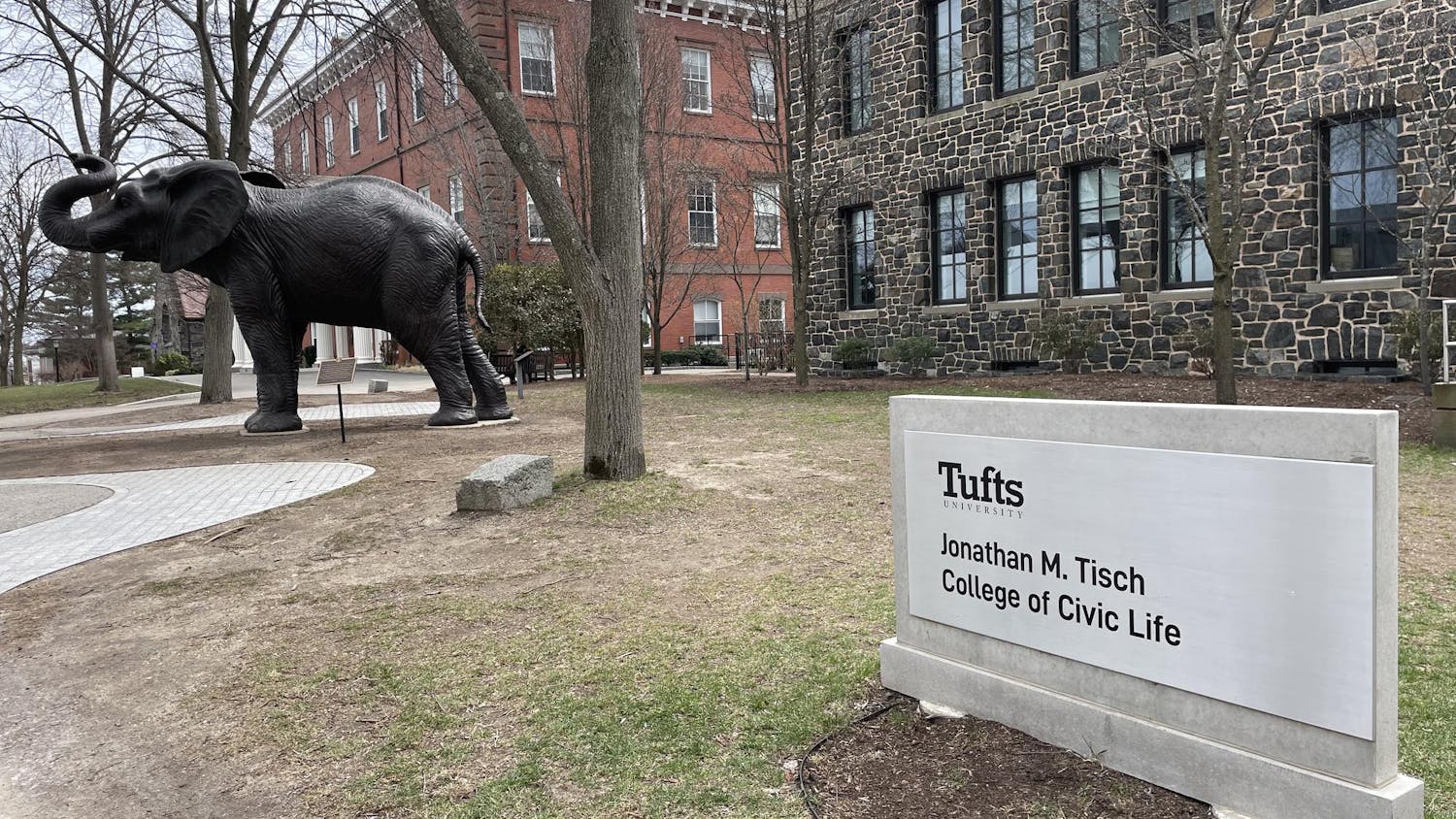University President Anthony Monaco in a Feb. 12 announcement stated that the university will adapt three recommendations from the Tufts Divestment Working Group.
The Board of Trustees, during their Feb. 8 meeting, agreed to adapt the recommendations, which include refraining from divestment at this time, creating a separate Sustainability Fund which would allow donors to ensure that that their contributions are not invested in fossil fuels and pursuing other courses of action to expand climate change awareness.
Monaco established the Divestment Working Group last April in response to a written proposal that members of the student-run organization, Tufts Divest for Our Future, had presented to the Investment Committee of the Board of Trustees in February 2013, according to Tufts Divest member Devyn Powell, a senior.
Executive Vice President Patricia Campbell, who served on the working group, said that each member was chosen to create an accurate representation of students, faculty, Trustees and the administration. The 11 members included were Trustees Laurie Gabriel (J 76), Bill OReilly (A 77; A13P) and Andrew Safran (A 76; F 77); Advisory Committee on Endowment Responsibility student representative Andrew Peng, a senior; Tufts Divest student representatives junior Lila Kohrman-Glaser, sophomore Ben Weilerstein and Powell; and faculty members Kelly Sims Gallagher, R. Bruce Hitchner and Ann Rappaport, in addition to Campbell.
Hitchner said that all entities serving on the group approached the three charter points with different perspectives and levels of understanding, but that their collaboration was necessary.
I thought engagement [of] students, faculty and members of the Board of Trustees and administration was a good mix for this purpose, and an essential mix, he said. Its important that all those perspectives be continually taken into account when it comes to important decisions within the university.
Katie Walsh (F 13), who was initially chosen to serve on the working group before she graduated last spring, said that she feels the members of the group represent only a minority of the community. The composition reflected an imbalance in the decision-making process and disregard of the recommendations made from Tufts Divest, she said.
Everyone was cherry-picked by the university, Walsh said. From the get-go, the formation was decided. We had other recommendations, other professors, other knowledgeable staff folks with a lot of expertise and background in business. We recommended different Trustee members. From the initiation of the working group, it was very much a university-driven and university-decided process.
Weilerstein, who took Walshs place on the group when she graduated, said that he also felt from the onset that the group was created without the intention of seriously considering student voices on the issue of divestment.
The way that they set up the working group [and] the questions that they asked going into it were meant to basically cut off the option of divestment, were meant to show why divestment wasnt a good option or wasnt a good idea, instead of looking for ways that we could make it work, he said.
Campbell said that all members were actively heard and respected during the working groups seven meetings.
I would say it was a very open dialogue, she said. I think it was clear from the start that the students did have a particular point of view and were advocating from the point of view of divestment. Everyone was able to participate fully.
Gabriel, the chair of the Board of Trustees Investment Committee, agreed, and said the working group took on a serious tone.
I think that everybody on the committee came into the conversation recognizing that global climate change is a serious issue and that if we could do something about it, we were all in favor of doing that provided that it made sense for the university, she said.
Campbell said that employees of the schools Investment Office put together a model representing the effects that divestment would have on the university. The working group then discussed the risks, benefits and feasibility of that model.
Hitchner explained that the model was put together to look at and understand how the endowment is managed, and revealed the complexity of the divestment concept.
Rather than to simply say if [divestment] is good or bad, we could actually put together a model of what divestment would look like, he said. Initially, my view was that this might be best done by an outside firm. But the resources for doing that were not available, and so it was done in house by the Investment Office. Its probably fair to say that its hard to have gotten a totally objective perspective on that, but there was undoubtedly some risk no matter what you did with divestment.123





